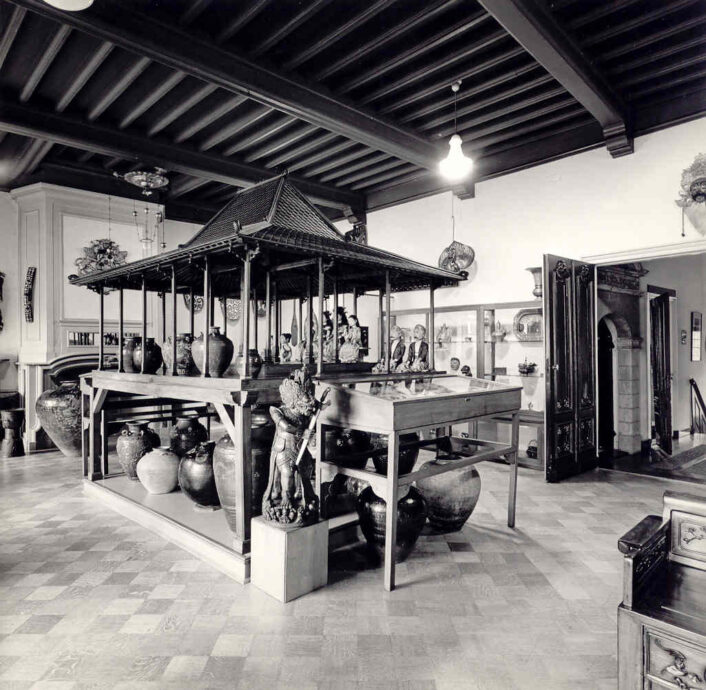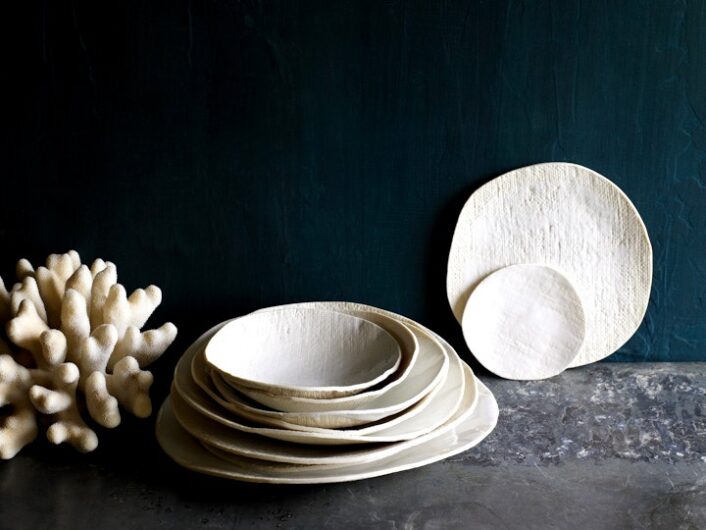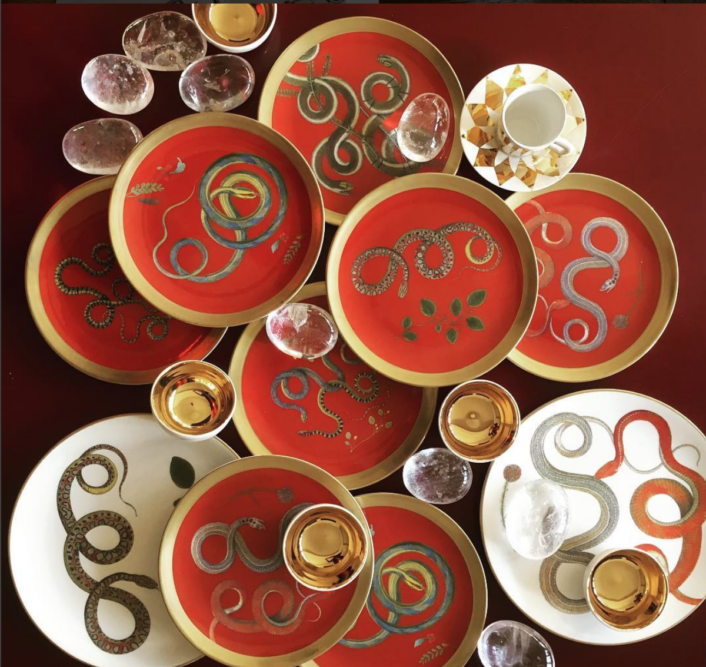Design
Astier de Villatte ceramics
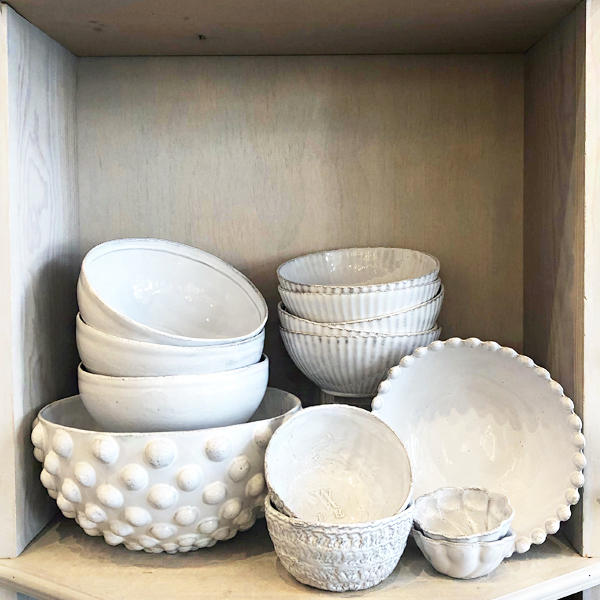
Bowls shaped from black terra cotta clay and finished with a white porcelain glaze.
Image courtesy of: Sue Fisher King
Astier de Villatte is the brainchild of two French designers Benoît Astier de Villatte and Ivan Pericoli. The pair met at the Ecole des Beaux-Arts in Paris where they spent their free time time creating a ceramics line. Interestingly, the young duo initially experimented with furniture design and only designed ceramics in order to accessorize with their furniture. Luckily, de Villatte’s father owned a kiln that he was happy bequeath to the budding designers.
What set the pair apart is that rather than porcelain, they worked with black terra cotta. Villatte and Pericoli were familiar with the material from art; however it is normally used for sculpting. Courtesy of an article in the New York Times by Chantel Tattoli, “In the style of ancient Romans, they pressed the clay into shapes with plaster molds, then applied a bright white glaze. Finished ceramics showed the artists’ hand in their uneven forms and the faint glimpses of terra cotta peeking through their smooth finish.”
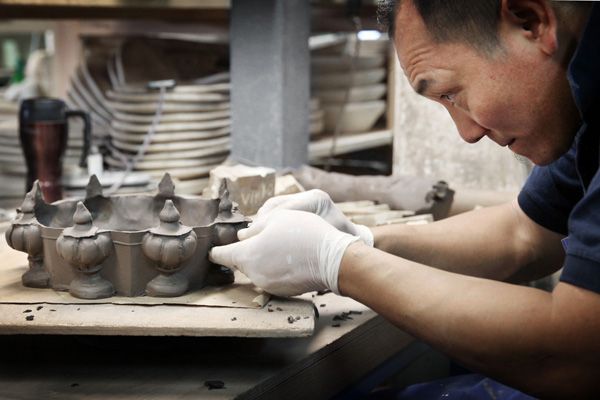
An artisan at work…
Image courtesy of: View from the Back
Founded in 1996, Astier de Villatte pieces were inspired by “anything from the past, any period, starting from the Neolithic.” Obviously, that is a wide time-frame to cover; but unique to the brand is that they truly design via inspiration… whether or not it seems as though it will be sellable. With no marketing service, for better or worse, the main objective is beauty. While at the core of the design is that the piece must be functional, the most important building principal remains beauty. As de Villatte says, “We like function but No. 1 is beauty. And if it works, it works.”
With a team of forty talented artisans, the Paris studio is filled with “good people.” And no, that isn’t just a sales-pitch or a marketing slogan. Unique to the brand is that they hire people with no prior knowledge of ceramics because thus, there are no preconceptions on how to produce. Coincidently, the studio has become a “little Tibet.” For a while now, many Tibetan people have worked in the studio; sometimes ex-monks chant mantras while making ceramics. The production atmosphere is calm and soothing, rather than a super efficient production-line.
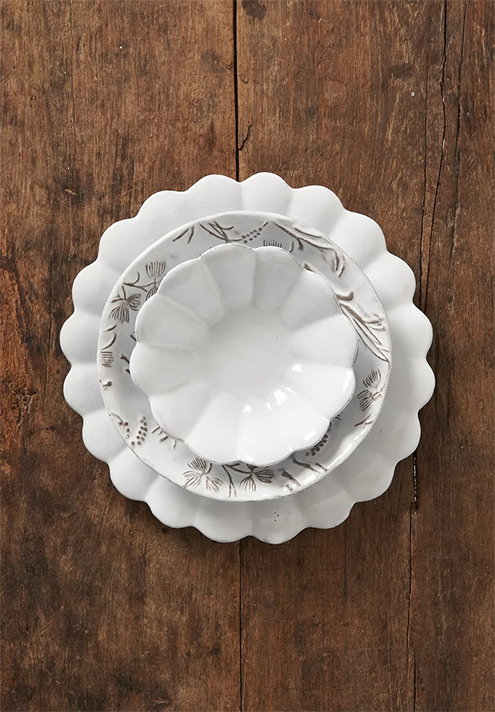
Marguerite Dinner Plate in white.
Image courtesy of: Santa Fe Dry Goods
The white, minimalist offerings seem standard today; but when the company was founded, simple white pieces were not the norm. When Astier de Villatte was founded 36 years ago, it was revolutionary to use a rough and dark clay and put a glaze on top of it. At the beginning, customers would say that they loved the shape, but that they preferred ivory or beige. Sticking to their guns, the pair decided to stick with white because they liked the color’s “energy.”
Initially, the company also produced plates in a pattern called Regence. The design, still one of the company’s most popular, was inspired by a style used by France’s Duke of Orleans. It took a lot of persuading and three years’ time for a cup to join the offerings.
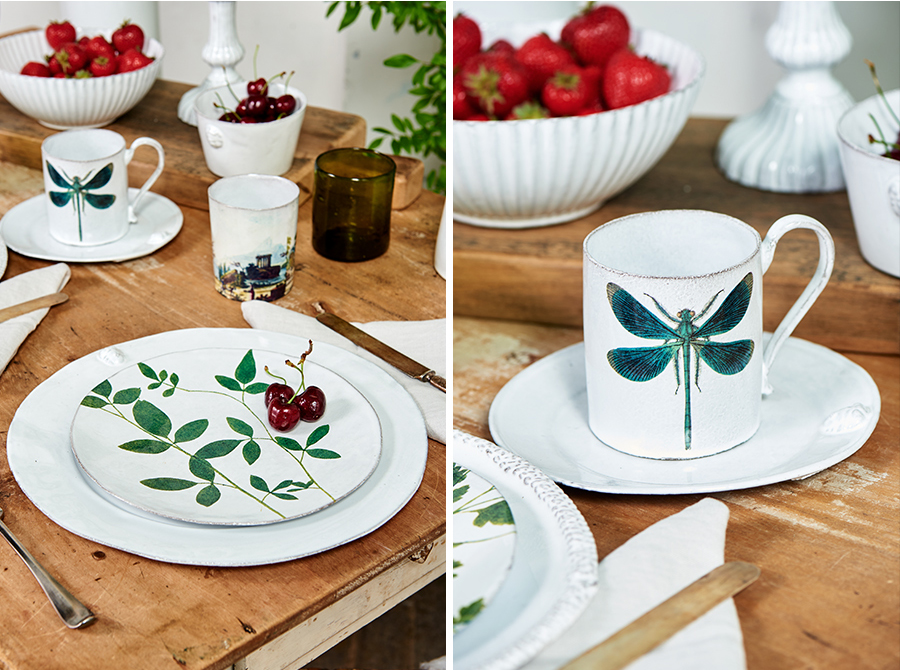
In frequenting flea markets, John Derian stumbled upon the idea of creating decoupaged plates. The art form started the 18th-century and was popular with artisans in Florence, Italy. Derian soon realized how he could expand upon his passion for prints; and today, he is often called the “decoupage maestro.” Working with Astier de Villatte resulted in a wonderful collection.
Image courtesy of: Santa Fe Dry Goods
Collaborations are very important to Astier de Villatte; one long-term collaborator is friend, John Derian. The drawings and antique imagery that are sourced from Derian’s designs are beautifully transferred onto platess. When the two entities joined forces in 2011, it was a natural partnership. Derian’s 19th-century illustrations and patterns seamlessly compliment the handmade ceramics.
Joining forces with the French sculptor Serena Carone proved to be a fun venture… for example, cups with handles shaped like cocktail rings are designed. Working with the Japanese painter Setsuko Klossowska de Rola resulted in the creation of a teapot shaped like a pawing cat.
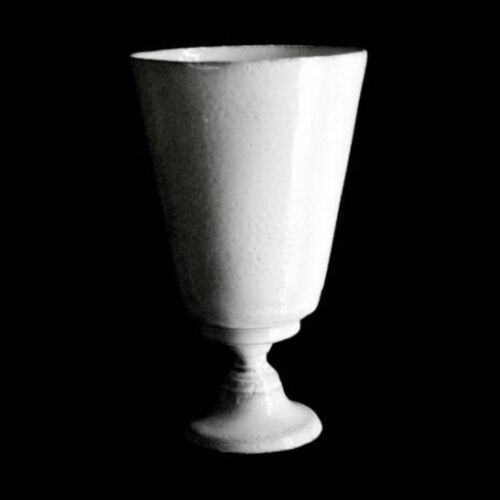
Simple Vase, made from black terracotta clay and finished with a white porcelain glaze. Handmade and one-of-a-kind.
Dimensions are: 7.5″ (length) x 7.5″ (width) x 12″ (height)
Image courtesy of: Sue Fisher King
The company is also unique in that they feel strongly against setting quotas. Production quotas are something that de Villatte and Pericoli simply will not work into their business plan. As such, output varies and existing vendors often find themselves waiting up to six months for orders. Coincidently though, they are the lucky ones as repeatedly, prospective retailers realize that they will not get the “okay” from the company’s sales team.
The flagship store on Rue St.-Honore in Paris and the second Parisian location are in addition to the headquarters in the 13th Arrondissement where a lab is located. Last autumn, a third location opened… this time, in Seoul. Preferring to work only with small, local businesses, it is an attention to “staying true to themselves” that has proven successful.
